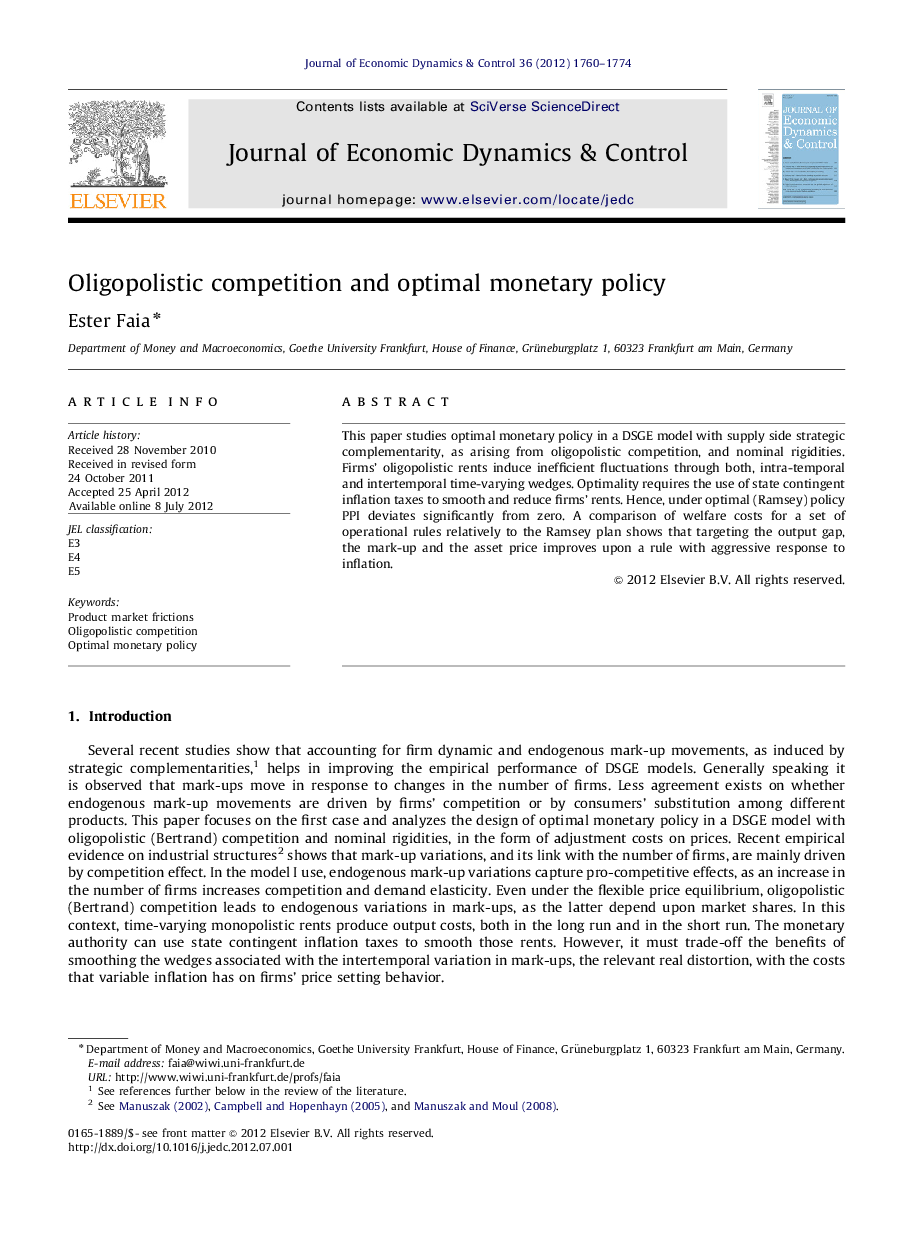| Article ID | Journal | Published Year | Pages | File Type |
|---|---|---|---|---|
| 5098927 | Journal of Economic Dynamics and Control | 2012 | 15 Pages |
Abstract
This paper studies optimal monetary policy in a DSGE model with supply side strategic complementarity, as arising from oligopolistic competition, and nominal rigidities. Firms' oligopolistic rents induce inefficient fluctuations through both, intra-temporal and intertemporal time-varying wedges. Optimality requires the use of state contingent inflation taxes to smooth and reduce firms' rents. Hence, under optimal (Ramsey) policy PPI deviates significantly from zero. A comparison of welfare costs for a set of operational rules relatively to the Ramsey plan shows that targeting the output gap, the mark-up and the asset price improves upon a rule with aggressive response to inflation.
Related Topics
Physical Sciences and Engineering
Mathematics
Control and Optimization
Authors
Ester Faia,
